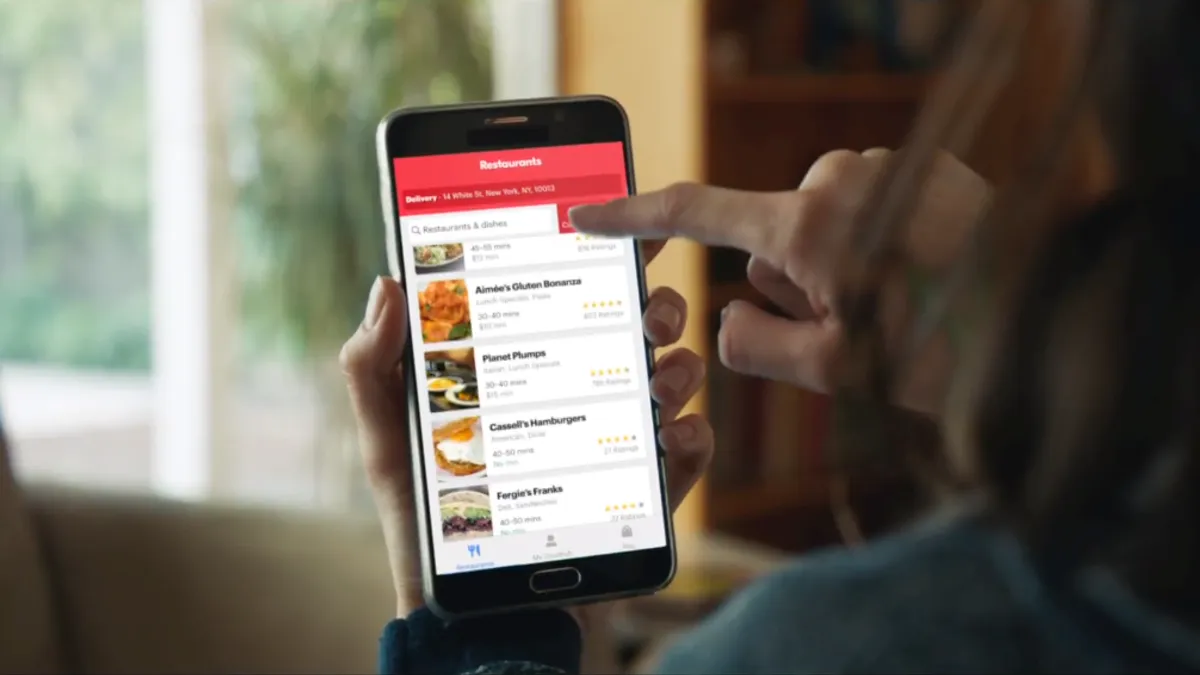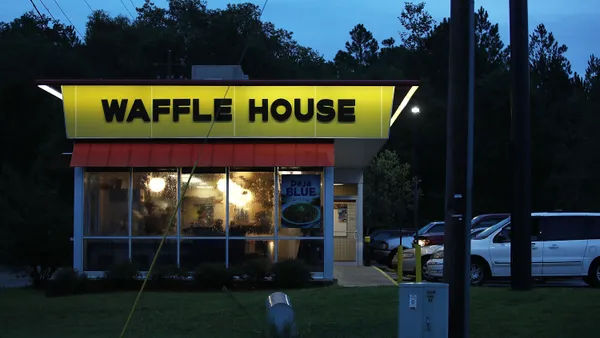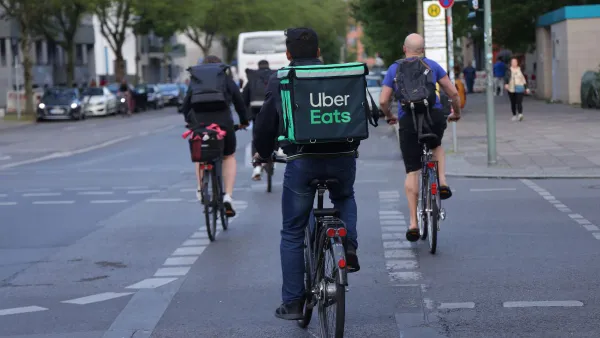Dive Brief:
- Grubhub reported $459 million in revenue during Q2 2020, a 41% increase from Q2 2019 that beat analyst expectations, according to a company release Thursday. The delivery platform said its corporate business has felt the brunt of the pandemic as a large swath of the workforce still hasn't returned to offices, according to a letter to shareholders sent Thursday. From April to June, Grubhub lost $45 million compared to a profit of $1 million in the year-ago period.
- The number of diners regularly ordering delivery rose during the pandemic, jumping 40% year-over-year last month. Average daily orders increased 35% for the period and gross food sales increased 59% to $2.3 billion in Q2 2020 compared to Q2 2019.
- "The pandemic has been less of a temporary demand spike and more of a permanent catalyst, putting our business on a higher sustained trajectory," CEO Matt Maloney and CFO Adam DeWitt stated in the letter.
Dive Insight:
Grubhub also saw a net increase of 25,000 partner restaurants since May, including major chains like Burger King, Chipotle and McDonald's. This brings the platform's partnered, restaurant count to 225,000, but it continues to operate a non-partnered restaurant network of more than 100,000 restaurants. Though the platform initially saw a significant uptick of new independent restaurant partners at the start of the pandemic, this growth has slowed.
COVID-19 undercut Grubhub's New York business, one of its key markets, and the company said while performance has improved in some surrounding suburban markets, Manhattan is still a sore spot for the business.
"Manhattan continues to be a drag as it is only partially open for business and many residents are choosing to live elsewhere temporarily; however, in all areas of New York City, including Manhattan, growth consistently improved as the quarter progressed," Maloney and Dewitt stated in the shareholder letter.
Grubhub spent over $85 million on advertising, coupons and free delivery promotions to augment sales during the period, which helped generate $200 million in incremental gross food sales for its partner restaurants, according to the company. Grubhub also shelled out $15 million for its delivery network, including providing higher pay and incremental bonuses and sending 250,000 personal protection equipment kits to drivers.
"Grubhub’s primary focus for the second quarter was supporting our restaurant partners during this unprecedented crisis," Maloney and DeWitt wrote in the shareholder letter.
Grubhub also spent more to attract new diners and restaurants to its platform in February, reinforcing the strategy that it discussed in 2019: it will undercut profit to better compete with industry rivals. In March, the company temporarily suspended up to $100 million in commission payments from independent restaurants that had been impacted by the pandemic. The platform also created the Grubhub Community Relief Fund, which includes money accrued through its Donate the Change program, which allows diners to round up the change from their order and donate it toward charitable organizations such as the Restaurant Strong Fund, World Central Kitchen and Boys and Girls Club of America. As of July 30, Grubhub had raised more than $7 million through the program.
But despite this assistance, Grubhub, along with other third-party aggregators, has been pushing back against municipalities capping commission fees during the pandemic saying they will result in fewer orders. In June, Grubhub violated San Francisco's 15% cap, which has been extended until indoor dining resumes. And just yesterday, Eater reported that three weeks after Portland passed a 10% cap on delivery commission fees, Grubhub and Postmates are not complying and several restaurants have waged complaints against the company.
Though Grubhub, Uber Eats, DoorDash and Postmates have all run special promotions, waived certain startup costs and launched special resources for restaurants, the issue of commission fees place the two sides of this coin at odds. Some restaurants argue that these fees, which can be as high as 30%, are predatory and especially damaging in the current climate, while delivery platforms argue that the caps put in place by cities will ultimately hurt restaurant operators and are overstepping.














